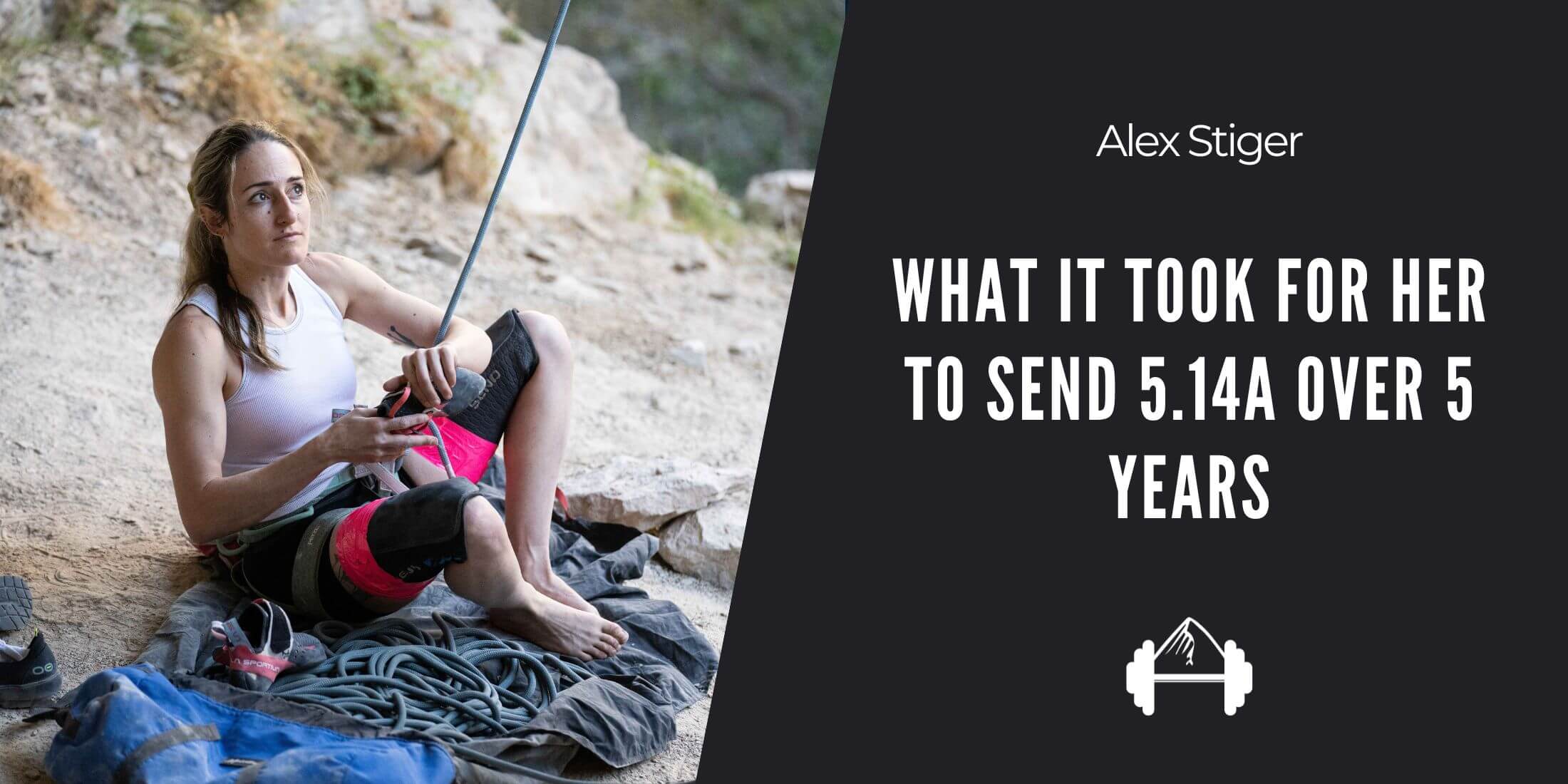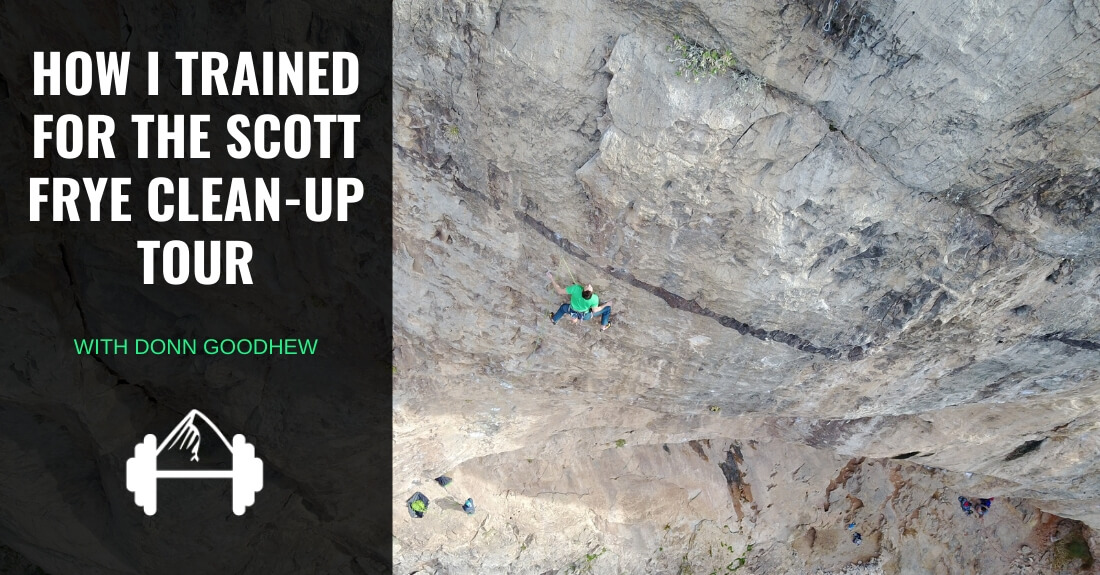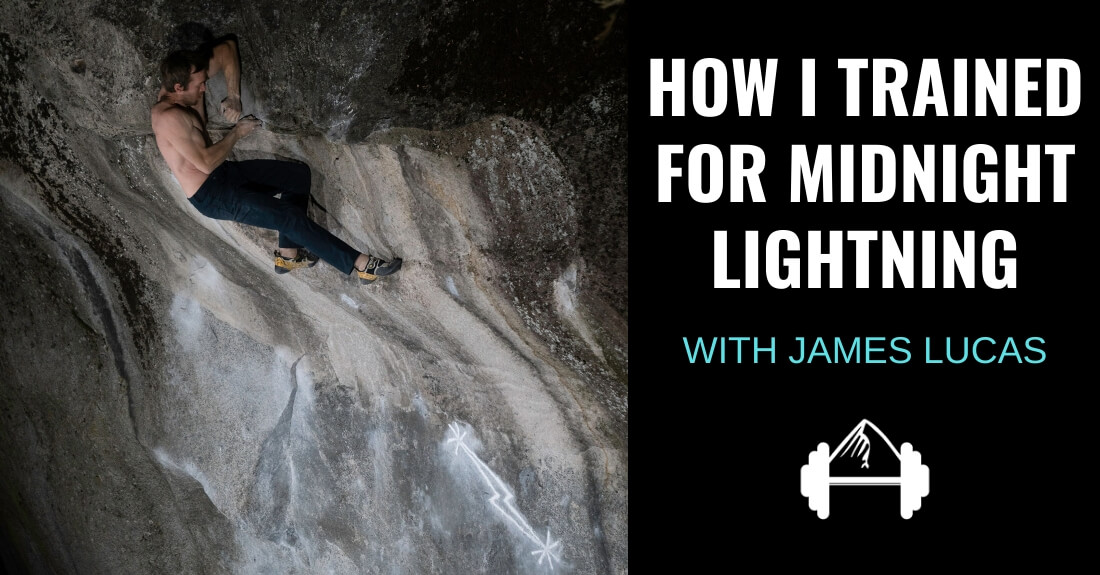Training programs may look great on paper, but people seldom follow them exactly. Instead, their training changes to reflect their schedule, goals, and life commitments. That’s why we’re starting a series here at TrainingBeta where real climbers share how they actually trained, why they did what they did, and what kind of results they saw.
First up is friend of TrainingBeta and Red River Gorge crusher, Brian Suntay. Brian is an accomplished sport climber with multiple 5.14 ascents under his belt. What he outlines below is the offseason route climbing training program that he used to get ready for last spring’s season in the Red and then again leading up to his trip to Rifle this summer.
There’s a lot that we like about Brian’s program. It’s simple, efficient, and effective. However, without giving it all away, we really want to highlight that even though Brian was training to climb routes in two notoriously pumpy sport climbing areas, he focused primarily on strength and prioritized intensity over volume. This is an area where a lot of climbers miss the boat and could improve the quality of their training. We’ll let Brian take it from here though…
An Offseason Route Climbing Training Program
I’m a weekday biomechanical engineer and weekend warrior based out of Columbus, OH. I was introduced to climbing in my early 20’s when I was in college, got hooked, and am still going at it into my early 30’s. I’d like to continue to improve as long as I can, but life happens and things change. Between housework, cooking meals, other hobbies, and now walking a dog, I found that there was no longer enough time in the evenings to have those long training sessions that I was used to. Therefore, I needed to figure out how to get stronger and fitter while training as little as possible.
Over the last couple of years, I switched up my training schedule based on ideas I’ve picked up from various training articles and evolved/adapted my training methods based on strength and kettlebell training. I trained at a higher intensity, but at a lower volume and with more resting involved. I won’t dive into the science and physiology behind it all, but in TrainingBeta Podcast Episode 110, Steve Bechtel goes into a little more detail and provides some references for some of the ideas that I’ve adapted. I’m still adjusting the program, but I think I came up with something that worked really well for me.
What follows is an outline of the training program I used prior to the 2018 spring season at the Red River Gorge and for 5 weeks prior to a 2 week trip to Rifle this past July. I’m psyched that you are reading this and hopefully these ideas will be useful to you as well.

Brian Suntay training on his modified home Moon Board set up.
Training Protocol
I get up at 5:30 am to go to work and usually get back home around 5:30 pm. My training was always after work in the evening and usually one day over the weekend. In order to save 45-60 minutes of driving time to and from the local gym, my wife, Nadya, and I built a modified Moonboard and gathered some strength training equipment in our basement.
Before we jump into the training protocol, it’s important to note that I always took a week or so off before starting each training cycle.
Weekly Schedule
My weekly training schedule was as follows:
- Day 1 – Strength/Power
- Day 2 – Cross Train
- Day 3 – Active Rest Day
- Day 4 – Strength/Power
- Day 5 – Cross Train
- Day 6 – Strength/Power Endurance
- Day 7 – Active Rest Day
Session Details
Day 1 – Strength/Power
- Weighted 10-second hangs using enough weight where I could hang for 13 seconds max and resting 3-5 minutes between each hang:
- 4 finger half crimp x 2 repetitions
- 4 finger open hand x 2 repetitions
- 3 finger open x 2 repetitions
- Limit bouldering on the Moon Board (max tension, minimal feet cutting)
- Retire once my power output dips
Day 2 – Cross Train
- Handstand practice (I really want to do one…)
- Heavy Turkish Get-Ups: 5 repetitions on each side with ample rest between repetitions
- Heavy deadlifts: 3 sets of 3 repetitions using enough weight where I can squeeze out 5 repetitions and adding a set each session up to 5 sets before adding more weight
- Maybe some strength focused core work if I’m feeling it, but to be honest, I’m usually too fatigued and/or hungry
Day 3 – Active Rest Day
- Easy kettlebell practice, mobility, stretching: This featured kettlebell swings, cleans, presses, and goblet squats all done as skill practice. This means at a light weight, low number of reps, with plenty of rest, and at a pace where my heart rate stays low and I never get out of breath.
Day 4 – Strength/Power
- Weighted 10-second hangs
- If my Day 1 weighted hangs felt good, I’d use the same weight as Day 1 but increase to 3 repetitions for each grip type.
- Once all 3 repetitions feel solid I will then add weight for the next session and go back down to 2 repetitions for each grip type.
- However, if any sessions feel hard and I find myself failing at or before 10 seconds, I will repeat with the same weight and repetition scheme the next session.
- Limit bouldering on the Moon Board (max tension, minimal feet cutting)
- Retiring once my power output dips
Day 5 – Cross Train
- Handstand practice
- One-arm-one-leg-push-up (OAOLPU) practice or any pushing exercise like military/overhead presses or bench presses would also work, but the nice thing about the OAOLPU is that it works the core really well too
- Static ring muscle up practice: 3 to 5 singles
- Pistol squats: 3 to 5 singles using bodyweight or added weight
- Again some strength focused core work if I’m feeling it
Day 6 – Strength/Power Endurance
- If I’m close on a couple Moon Board projects I will try linking them for a few tries each
- Then either:
- Option 1: Moonboard 4×4’s.
- These aren’t the conventional 4×4’s where most climbers would climb a problem 4 times in a row and get super pumped. Instead, I chose 4 problems that I’ve done but require me to try really hard to complete. I climb Problem A 4 times in a row, resting 1-1.5 minutes between each attempt. After my fourth attempt, I’d rest 3-5 minutes before moving on to Problems B, C, and D.
- Option 2: 8 to 12 boulder problem circuit in the gym
- I choose a combination of problems at my onsight level and some that that took a few tries to complete.
- 1 minute between problems.
- I repeat the whole circuit 2 to 3 times with 5-7 minutes rest between sets.
- Option 1: Moonboard 4×4’s.
- For both options 1 and 2, the key is to never get out of breath and super pumped. Rest longer if needed.
Day 7 – Active Rest Day
Easy kettlebell practice, mobility, stretching: This featured kettlebell swings, cleans, presses, and goblet squats all done as skill practice. This means at a light weight, low number of reps, with plenty of rest, and at a pace where my heart rate stays low and I never get out of breath.

The author keeping the intensity high by doing “Moon Board 4x4s” for his endurance training.
Training Program Notes
For each training session, I would warm up with kettlebell swings/kettlebell practice and fingerboard hangs (if the session contained weighted hangs). Most importantly, I never climbed to failure and was never wrecked after the training session allowing for better recovery. Honestly, however, not all days felt good. There were some days when I didn’t feel super strong and lacked power. When these days happened I decreased the intensity and/or volume so that I didn’t unnecessarily trash myself. The things I found to be the most helpful for me were to train/try hard (high intensity), keep things simple, and never overtrain – preferring to undertrain and quit early than overtrain.
You will also notice that I incorporated more kettlebell and barbell practice/training than the average climber probably needs to. I included these things, as well as the OAOLPU, in order to maintain the skills I learned from a kettlebell and bodyweight certification that I attended in the past. It may be hindering my performance and I could probably progress at climbing quicker if I left it out, but I enjoy it, I like being well-rounded, so I’m going to continue with it.
Results
This spring was wet at the Red River Gorge, but I was able to squeeze out a couple of things during some of those rare days it stayed dry. I’m not usually one to spray, but I managed to do a couple 5.14s (Southern Pump 5.14a and Transhicans 5.14a/b). Although both routes were link-ups, I never thought I’d get back on one of the routes after sending the original lines 2.5 years ago, but moves felt easier and both went down quicker than I would have thought. I was really close to putting down a third, but the route stayed wet for the remainder of the season. Despite that, it was still one my best seasons at the Red.

Brian Suntay putting his training to work on the Red’s 50 Words for Pump 5.14b (sent in the fall of 2017) | Photo: Andy Wickstrom | @andywickstrom
Then came Rifle in July. Although it had been 6 years since I was last there, I had somewhat of an idea of what I was getting myself into. My original goal for Rifle was to do a couple hard-ish routes, like a 5.13+ and a 5.14-. However, the realization that I still needed a few climbing days to adjust to Rifle limestone plus the arrival of some pretty hot conditions forced me to readjust my expectations and switch up my goals a bit. Sure, I didn’t send the routes I originally had my eyes on, but I did manage to send one 5.13b (Cantina Boy) and four 5.13c’s (The Path, Spray-a-Thon, Cryptic Egyptian, and Fluff Boy) all in 5 tries or less and within 1.5 weeks. I was still happy and beyond psyched since I’ve never done that before and I was able to sample some of Rifle’s classics.
In the Red this spring and Rifle this summer, I may not have sent my hardest routes to date, but moves felt easier and I sent more routes in less time. So, in my eyes, the seasons and the program were successes.
Cover Photo: Brian Suntay climbing 50 Words for Pump | coutesy of Andy Wickstrom | @andywickstrom
About the Author:

Based out of Columbus, Ohio, Brian is a biomechanical engineer who literally works with a bunch of dummies – crash test dummies to be more specific. Mainly a sport climber who occasionally finds himself lost among the boulders, his addiction to the sport began in college when he was in his early 20’s. Twelve years later, the never-ending challenges, his love for the outdoors, the opportunity to travel to new places, and all the amazing people he meets continue to feed his addiction and love for climbing. With his wife Nadya and crag-pup Mona, Brian hopes to continue this lifestyle, travel the world, and build new friendships for many more years to come.





Leave A Comment